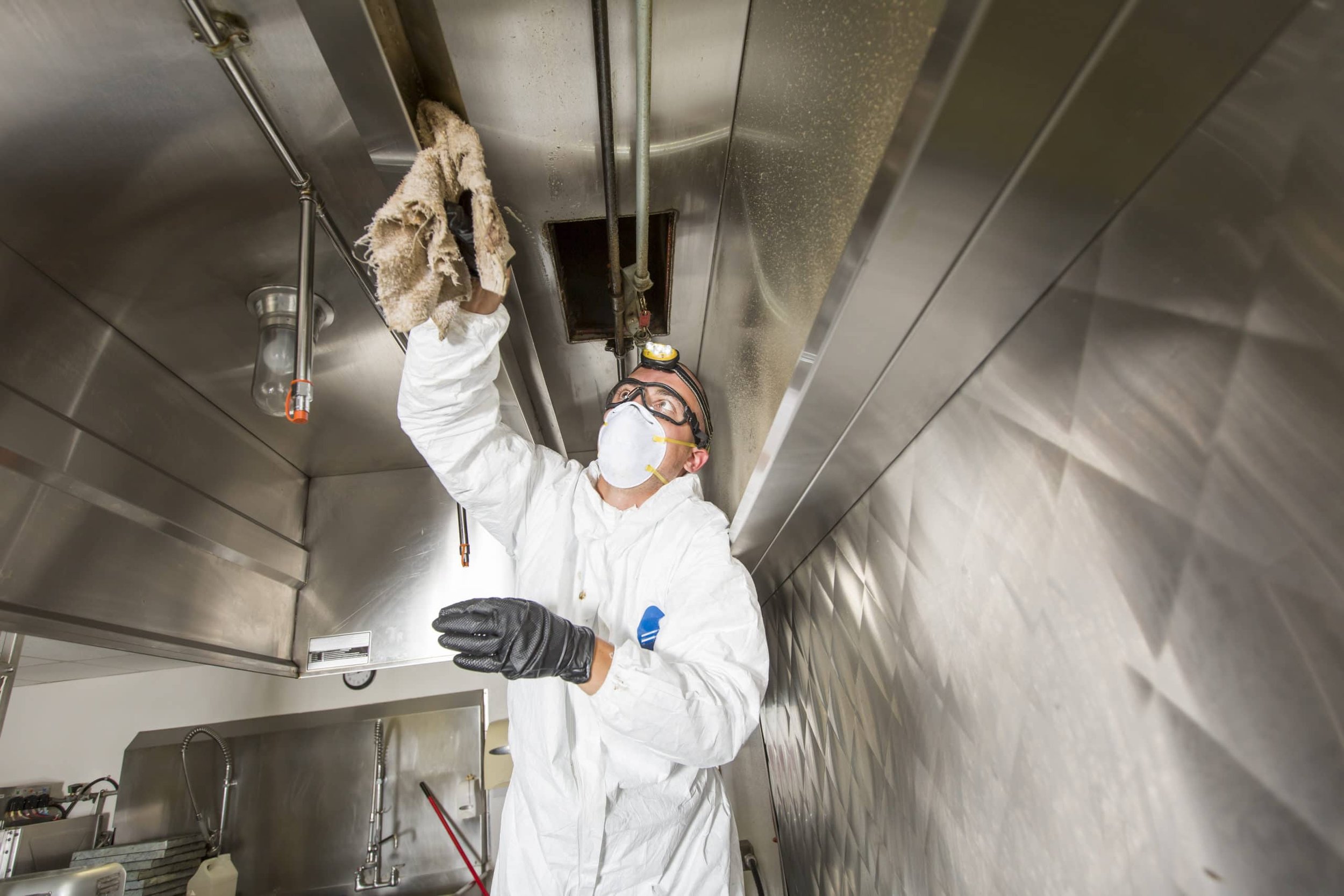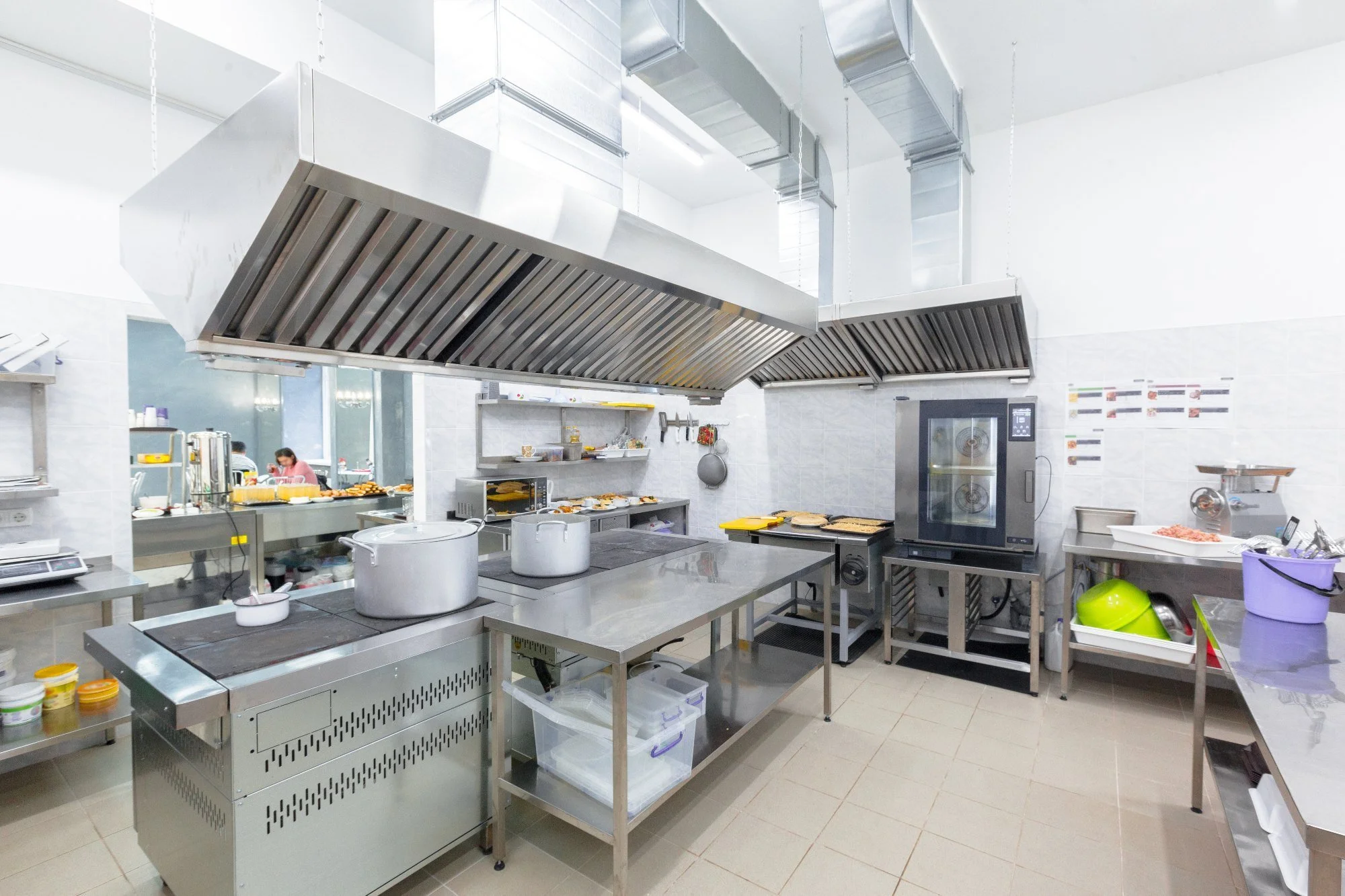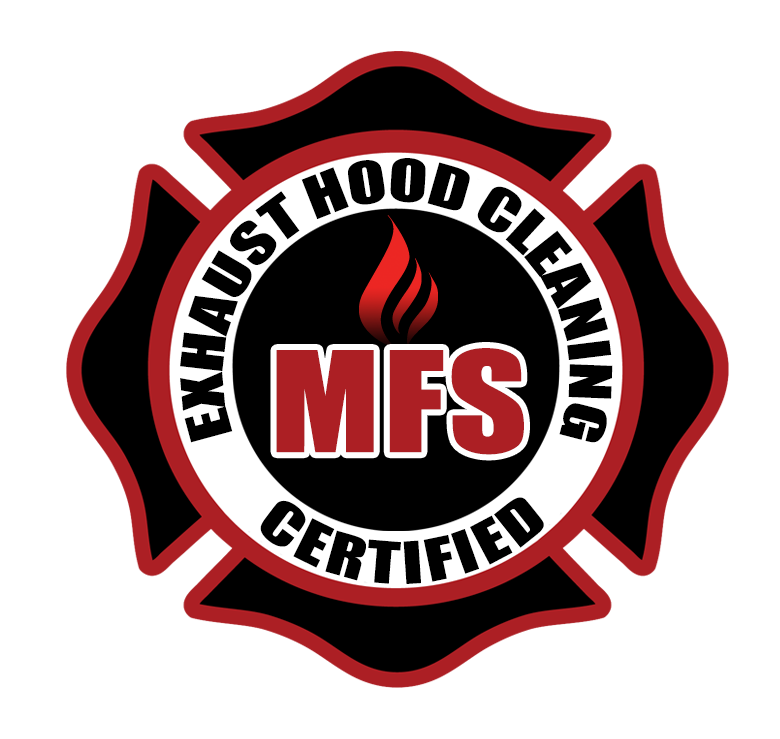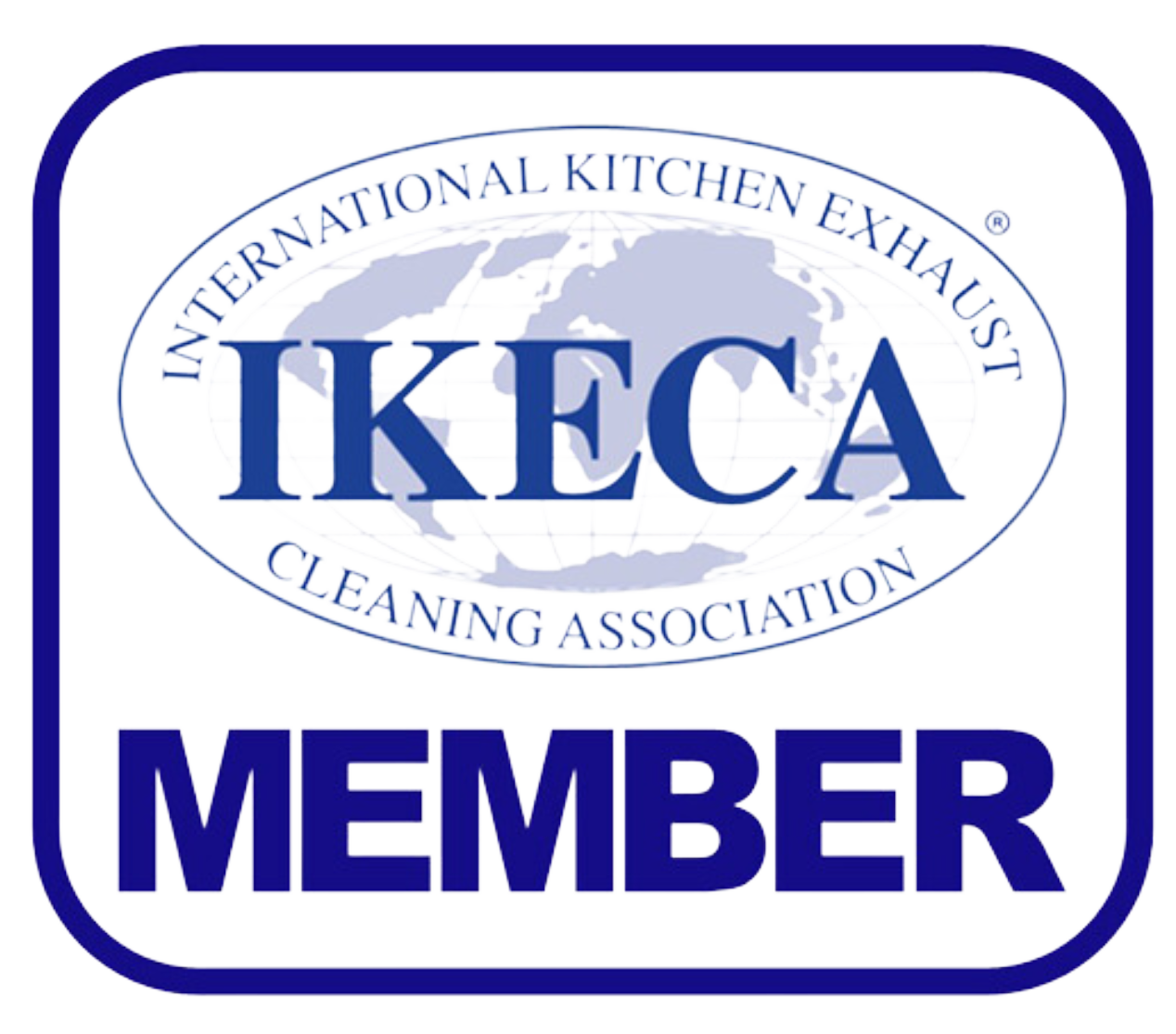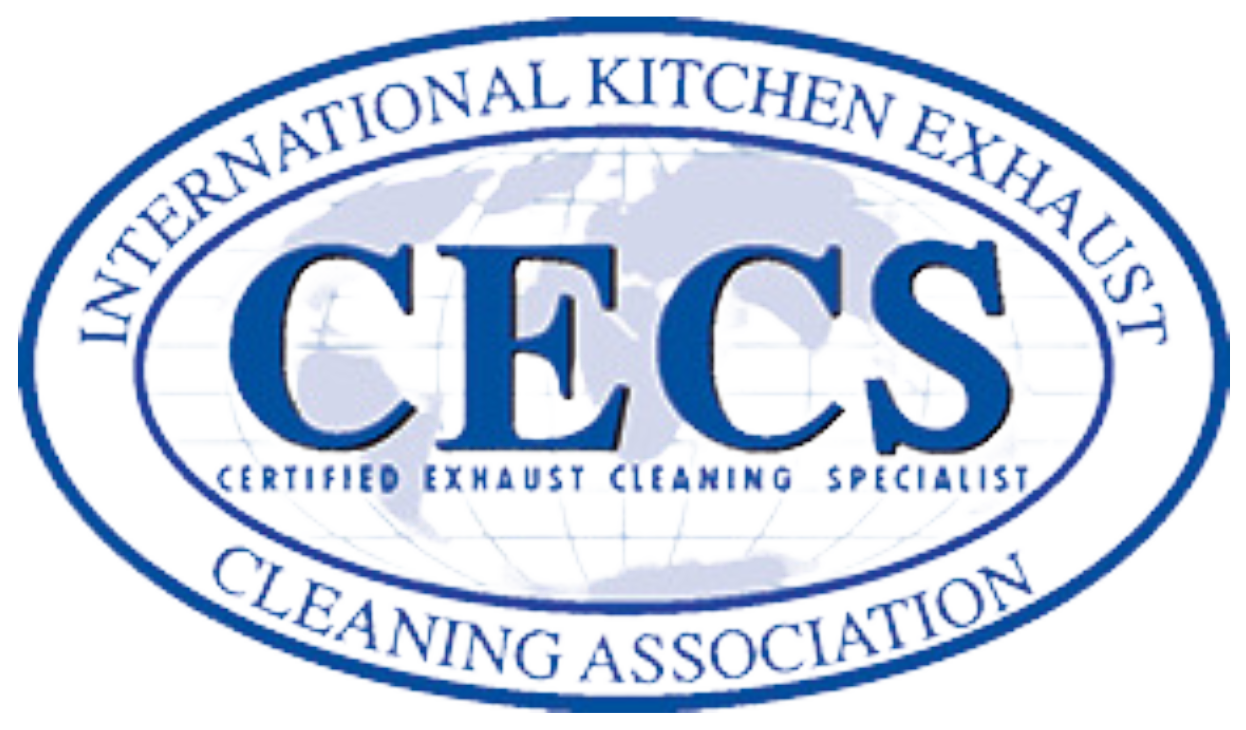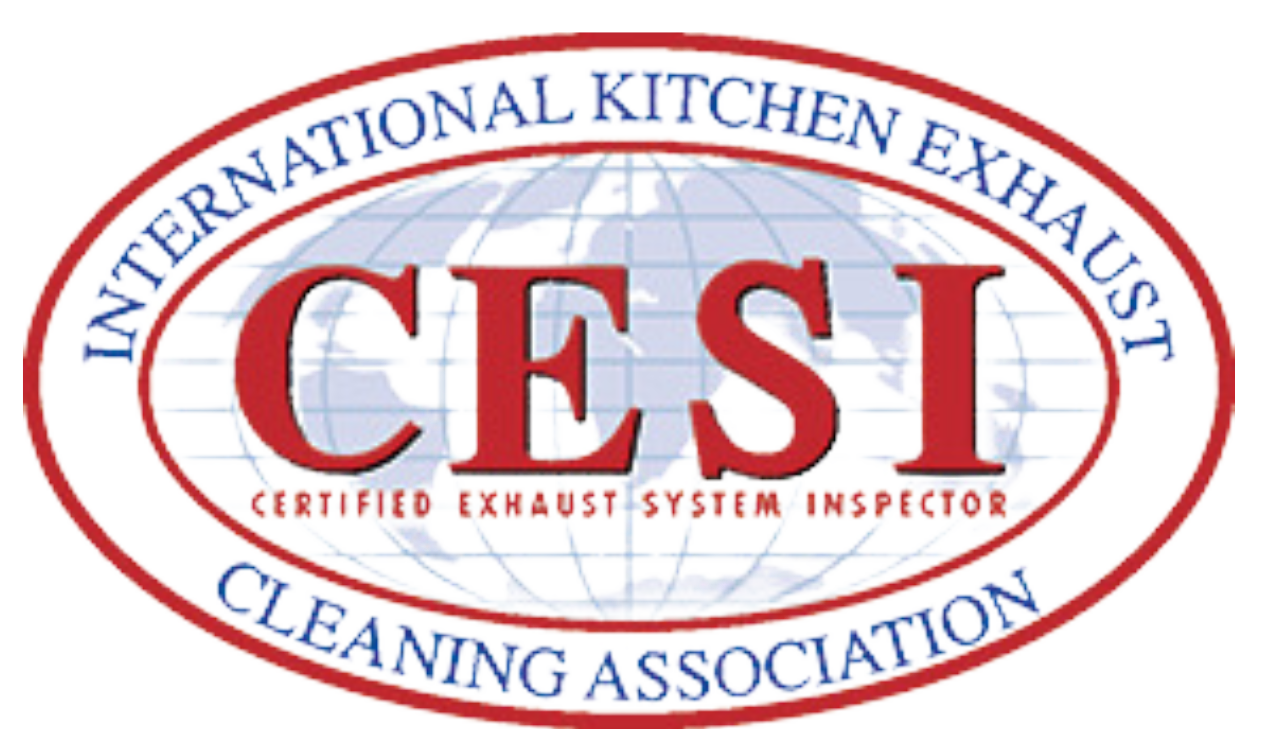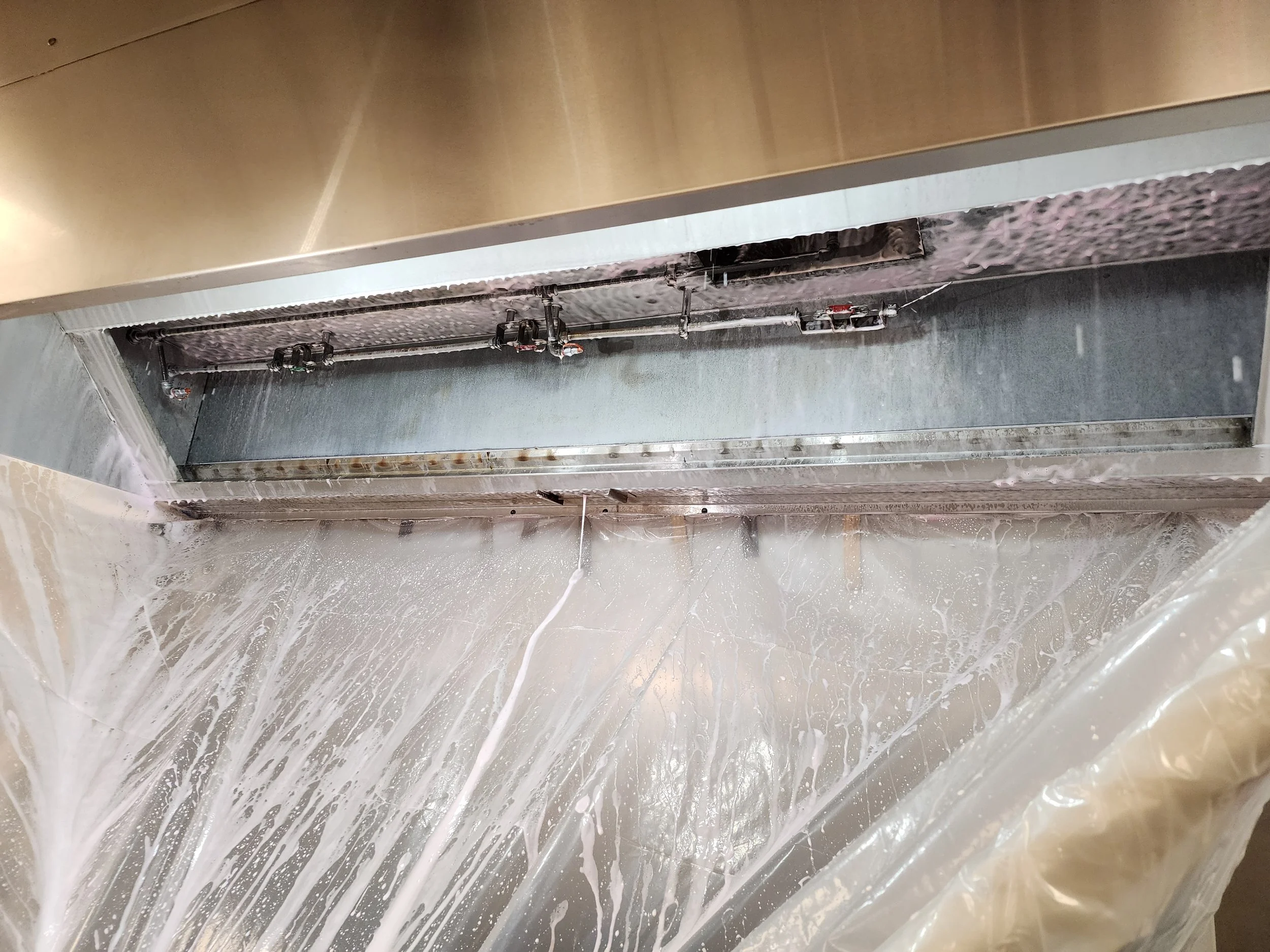
Commercial Kitchen Exhaust System Cleaning & Inspection
Exhaust System Cleaning Importance & Frequency
Why Commercial Kitchen Exhaust Hood System Cleaning Matters:
Under NFPA 96, regular cleaning of commercial kitchen exhaust systems is required to reduce fire hazards, maintain system performance, and ensure compliance with local and national fire and health codes. These systems—including hoods, filters, ducts, and exhaust upblast fans—are continuously exposed to grease-laden vapors and must be maintained to prevent hazardous buildup.
Top 3 Reasons for Exhaust Hood System Cleaning:
Fire Prevention:
Grease accumulation in hoods, ducts, and fans can ignite and rapidly spread fire through the exhaust system. NFPA 96 mandates the removal of such combustible residues to prevent ignition sources.System Efficiency & Air Quality:
Clean systems allow for proper airflow, improving the kitchen environment by reducing smoke, heat, and odors. This contributes to a safer and more comfortable workspace.Code Compliance & Liability Protection:
Routine cleaning ensures compliance with NFPA 96 Section 11.6, as well as local fire, health, and insurance requirements. Failure to maintain the system can result in citations, closures, or denied insurance claims.
Required Frequency of Kitchen Exhaust Hood System Cleaning:
The frequency of inspection and cleaning depends on the volume of cooking and the type of food prepared.
High-volume kitchens, like those in restaurants or hotels, require monthly inspection and cleaning, while lower-volume kitchens, like mom and pop shops or summer camps, need inspection and cleaning quarterly or semi-annually.
National, State, & Local Regulations
National Fire Protection Association (NFPA) 96:
NFPA 96 is the primary standard governing the installation, inspection, and maintenance of commercial kitchen ventilation systems. This standard serves as the foundational guideline for ensuring that commercial kitchen ventilation systems are designed, installed, and maintained in a way that minimizes the risk of fire, protects property, and ensures the safety of both staff and customers. Each system must comply with NFPA standards and undergo regular inspection and maintenance.
According to NFPA 96 Table 12.4, the following inspection and cleaning schedule applies:
High-Volume Operations
(e.g., 24-hour restaurants, hotels, fast food chains)
➤ Monthly inspection and cleaning of the entire exhaust system.Moderate-Volume Operations
(e.g., sit-down restaurants, small cafeterias)
➤ Quarterly (every 3 months) cleaning required.Low-Volume or Seasonal Operations
(e.g., churches, day camps, seasonal kitchens)
➤ Semi-annually (every 6 months) at minimum.*Systems Serving Solid Fuel Cooking Equipment
(e.g., wood- or charcoal-burning grills)
➤ Monthly or more frequently, depending on grease buildup.
🔍 All cleaning intervals must be adjusted based on grease accumulation inspections and documented findings, as per NFPA 96 Section 12.6.1.
The standard also mandates that inspection and cleaning must be performed by trained, qualified personnel.
Occupational Safety and Health Administration (OSHA):
OSHA mandates that all employers provide a safe working environment, which extends to kitchen exhaust cleaning operations. Companies such as Deftwerk Solutions are required to:
Ensure cleaning personnel are properly trained.
Use appropriate Personal Protective Equipment (PPE).
Apply cleaning chemicals that are safe, labeled, and used in accordance with Hazard Communication Standards (29 CFR 1910.1200).
Follow all applicable safety protocols for confined spaces, elevated work (e.g., ladders or roof access), and chemical handling.
State and Local Fire Codes:
In addition to the NFPA 96 standard, state and local fire codes may impose additional requirements.
For Washington State:
The 2021 Washington State Fire Code, based on the International Fire Code (IFC), governs commercial cooking operations.
Local county and city fire authorities may enforce stricter inspection and cleaning intervals based on risk level or cooking volume.
Reporting and documentation of service are often required for review by local fire marshals.
Health Department Regulations:
State and local health departments enforce cleanliness standards for food service operations, including:
Maintaining a grease-free, sanitary exhaust system as part of overall kitchen hygiene.
Undergoing routine inspections to verify that all components (hood, filters, appliances, etc.) are cleaned and maintained regularly.
Non-compliance can result in citations, penalties, or suspension of operating licenses.
Environmental Protection Agency (EPA):
The EPA regulates the proper disposal of grease, wastewater, and chemical agents used during kitchen exhaust and equipment cleaning:
Waste materials must be captured, contained, and disposed of in accordance with Clean Water Act regulations and local ordinances.
We use biodegradable degreasers that exceed federal and local environmental standards, ensuring both effective cleaning and eco-conscious practices.
We implement procedures that prevent contamination of water systems, soil, and public waste infrastructure.
Scheduled compliance with these regulations not only minimizes fire risks, but also ensures the kitchen operates efficiently and remains in good standing with health and safety authorities!
Pre-Inspection & Cleaning Preparation
Regular maintenance of commercial kitchen exhaust systems—including hoods, grease filters, ducts, and exhaust fans—is a critical requirement under National Fire Protection Association Code 96 (NFPA 96) to prevent fire hazards, ensure system efficiency, and maintain compliance with local fire and health regulations.
Initial System Inspection:
A thorough inspection of the kitchen exhaust system is conducted by one of our MFS NFPA 96 accredited Private Inspectors to assess the level of grease buildup and identify any areas needing special attention relative to the hood plenum, filters, ducts, and exhaust upblast fans. Our process is as follows:
Assess the extent of grease accumulation and identify areas requiring targeted cleaning.
Evaluate all major components including the hood plenum, grease filters, ductwork, and exhaust upblast fan.
Identify access panel availability, system damage, or obstructions that could hinder proper cleaning.
Document findings with a detailed service report, including photographic evidence for compliance tracking and customer records.
This inspection ensures that the cleaning process aligns with NFPA 96 Section 11.6.1, which mandates cleaning frequency and scope based on the observed level of grease buildup. Full system service and function reports are generated along with photographic evidence of inspection findings.
Cleaning Area Preparation:
To maintain a safe and sanitary environment during the cleaning process, the surrounding kitchen area is carefully prepared in accordance with industry best practices and NFPA 96 guidelines:
Protective sheeting (plastic or flame-resistant welding blankets) is used to cover adjacent kitchen equipment, countertops, and food contact surfaces.
Floors near the cleaning zone are shielded to prevent slipping hazards from overspray or chemical runoff.
Electrical equipment near the hood or ducts is either de-energized or shielded as required for safety.
Waste containment systems are set up to properly collect grease, debris, and rinse water in compliance with EPA and local disposal regulations.
Commercial Kitchen Exhaust Hood System Cleaning Procedures
Cleaning the Hood (Plenum) — Interior & Exterior Surfaces:
The exhaust hood, including the plenum, is the primary point of grease capture and must be thoroughly cleaned:
Degreasing agents formulated for commercial food service environments are applied to all interior and exterior surfaces.
Heavy grease deposits are manually removed using scrapers in accordance with NFPA 96 Appendix A recommendations.
Surfaces are then rinsed with hot water or steam to eliminate residue and restore safe, efficient airflow.
Special care is taken to clean any accessible joints, seams, or crevices where buildup may occur.
Cleaning the Grease Filters:
Filters act as the first line of defense by capturing grease before it enters the ductwork. According to NFPA 96 Section 10.10.2, grease filters must be cleaned regularly and maintained in operable condition:
Filters are removed from the hood assembly.
Soaked in an approved degreasing solution for an appropriate dwell time.
Manually scrubbed to remove trapped grease and particulate matter.
Rinsed thoroughly with hot water and fully dried before being reinstalled.
⚠ Damaged or non-compliant filters must be replaced immediately per NFPA 96 Section 10.10.4.
Cleaning the Ductwork & Exhaust Fans:
The exhaust ducts and upblast fans must be cleaned to prevent the spread of fire beyond the cooking area, as outlined in NFPA 96 Sections 7.1 & 8.1. The ductwork, which channels air from the hood to the outside, is cleaned using high-pressure washing or scrubbing. This is crucial because grease buildup in the ducts can become a significant fire hazard. The exhaust upblast fan and vents are also cleaned to ensure proper airflow and to remove any grease that might have accumulated on the blades and other components.
All accessible ductwork and fan housings are opened via UL-listed access panels, where applicable.
Grease buildup is removed using rotary brushes, steam cleaners, or high-pressure hot water systems.
Fan blades, housings, and drip trays are cleaned to maintain proper airflow and system balance.
The area is inspected for damage, corrosion, or mechanical wear that could impact system performance or safety.
All components are returned to operational condition and reassembled securely.
By following these procedures, we ensure that every part of the system meets or exceeds NFPA 96 requirements, while providing documentation to support inspections by fire marshals, insurers, and health departments.
Post-Inspection & Certification
Final Inspection and Certification Documentation:
Proper documentation and final inspection are critical components of a compliant exhaust system cleaning process. Per NFPA 96 Section 11.6.13, all work must be verified upon completion, and records must be made available to the authority having jurisdiction (AHJ).
Final System Inspection:
A post-cleaning inspection is performed to verify the removal of all grease, contaminants, and obstructions from the hood, filters, ducts, and exhaust fan components.
The system is visually inspected and physically tested (where applicable) to ensure it meets NFPA 96 cleanliness and performance standards.
All findings are documented through written notes and before-and-after photographic evidence to demonstrate compliance.
System Reassembly & Operational Verification:
All components—including grease filters, access panels, and fan housings—are reinstalled and secured in accordance with manufacturer specifications and NFPA guidelines.
Power is restored to the system if previously shut down.
A final functionality check is conducted to confirm safe and efficient operation of the exhaust system.
Certification & Documentation:
To maintain full code compliance and provide transparent service records:
A Job Service Report (JSR) is generated for each cleaning event.
A Certificate of Performance is issued and affixed to the exhaust hood per NFPA 96 Section 11.6.14, indicating the cleaning date, next recommended service, and provider credentials.
These records are required for review by fire marshals, insurance providers, and other regulatory authorities!
Digital Records & Client Portal Access:
To ensure clients have immediate and ongoing access to vital service documentation:
Invoices are issued at job completion with options for secure online payment.
All Job Service Reports, Certificates of Performance, and related photos are stored for a minimum of 5 years, as recommended by best practices for record retention.
Clients receive 24/7 access via the Deftwerk Solutions Client Portal to:
View and download certification documents
Access service history
Manage upcoming appointments
Process payments securely
Contact us for a FREE digital inspection & estimate!
Accreditations & Affiliations


